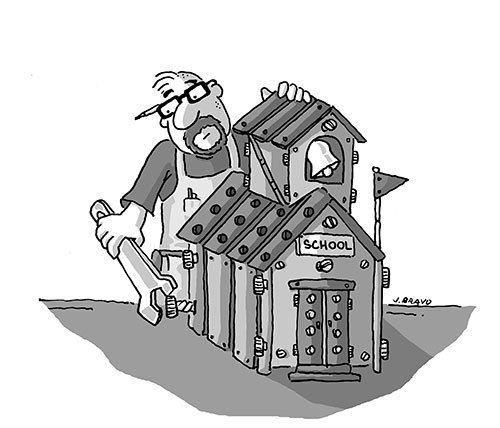School Improvement Grants, or SIG, are supposed to be strong medicine for the most difficult ailments in the American school system: schools performing in the lowest 5% of their states. SIG provides proportional funding to states, which then hold competitions among low-achieving elementary and secondary schools. SIG funding is quite substantial, yet evaluations of SIG recipients find modest impacts on achievement. Most SIG schools gain about as much as non-SIG schools in the same state on state achievement measures.
Part of the problem with SIG is that until recently, schools had to choose among four models. All required draconian changes in governance (such as closure or charterization) or personnel (firing the principal and/or half of the staff). Worse, the grants were for only three years, so many schools spent most of that time recovering from SIG-inflicted disruptions. Not to mention that none of the solutions had any evidence of effectiveness.
Last year, SIG changed for the better. Schools could choose among three additional models, including a proven whole-school reform model, in which schools could implement an externally-developed model with at least one large, randomized study indicating positive achievement effects. This and one other model were continued into the current year, after which SIG will transition into a remodeled School Improvement program under the Every Student Succeeds Act (ESSA).
The proven whole-school option should have been a major advance, but it is not yet making much of a difference. Few SIG schools applied under this option for the 2015-2016 school year. One problem is that only four proven programs qualified: two elementary (our Success for All program and Positive Action), and two secondary (Institute for Student Achievement and New York City's small high schools program). Things may pick up this year, but none of us see any indication yet that this will be the case. More likely, schools will once again chose among the four original models, because they are familiar and known to reliably bring in the grants.
As ESSA requires states and districts to transition to the new School Improvement program, perhaps things will be different. ESSA does not require any particular models, but does require that schools receiving School Improvement funding use programs that meet "strong," "moderate," or "promising" standards of evidence of effectiveness.
ESSA could have the same problem as the previous SIG proven whole-school reform option. Not many programs will meet the evidence standards at first. With the traditional four SIG models swept away and more federal emphasis on research, perhaps there will be more use of proven programs in low performing schools, but perhaps not.
Here is an additional idea that could greatly increase the use of proven programs in low performing schools. Consistent with ESSA regulations, School Improvement leaders at the federal and state levels might encourage qualifying schools to either adopt proven whole-school models, as in the current whole-school reform model, or to build their own model, using proven components. For example, a qualifying school might adopt a proven reading program, a proven math program, and a proven tutoring approach for struggling readers. Because there are several proven models of each kind, this would give schools much more flexibility and choice. Coordinating multiple programs takes some care, but the coordination itself would be part of the School Improvement plan. Imagine, for example, that the U.S. Department of Education created a recommended list of components that could be fulfilled by one partner organization (a proven whole-school program) or by several providers of proven approaches. Here is a simple checklist that might be suggested for an elementary school:
Proven reading program
Proven math program
Proven tutoring program for struggling readers
Proven social-emotional learning/behavior management approach
ESSA allows for a considerable range of evidence, from "strong" (at least one randomized study) to "promising" (one correlational study with statistical controls for pretests). The law is what it is, but I wonder if states and local districts, and perhaps even the U.S. Department of Education, might encourage schools to choose programs that meet the highest standards. The four programs approved by the U.S. Department of Education that meet the current SIG whole-school reform model in the current law had to meet what amounts to the "strong" evidence standard. For schools in major trouble, why would we encourage use of weaker evidence? Stronger evidence increases certainty of effectiveness, and certainty is the goal.
We have spent many years and billions of dollars failing to turn around thousands of schools that demonstrably need a lot of help. These are places where proven programs should make a substantial difference. Can anyone think of a reason we shouldn't try?

